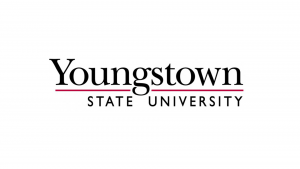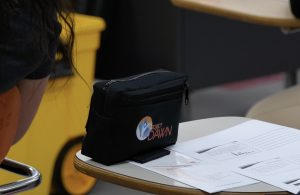By Kelcey Norris
In order to keep a university financially afloat, committees are formed to find where money and resources are in danger of being misused.
Enterprise Risk Management is one of these committees dedicated to identifying potential risks at Youngstown State University.
Susan Viglione, risk management officer at YSU, leads the committee to ensure risks are not ignored and that they are met with both acknowledgment and determination.
According to Viglione, the committee works as a unit with various departments to find solutions to potential risks.
“Generally, different departments individually determine what the risks are, and then they develop, whether they realize it or not, mitigation plans,” Viglione said. “The purpose of ERM is to take everything at a middle ground and bring it up kind of like a pyramid to the top, where each risk is analyzed and evaluated from more of a bird’s-eye view.”
ERM is outlined in five main steps: identify, analyze and prioritize, mitigate, monitor and communicate.
Viglione said members of the committee use the process to determine what risks exist and what needs to be improved in each department.
“We interviewed 30 key stakeholders around campus and asked, ‘What keeps you up at night?’” Viglione said. “We’re finding out what one area of the university is doing about a risk, looking at it and asking, ‘How can we improve what we’re doing about this?’ We’re communicating and combining so that we’re consistent.”
Viglione implemented ERM to streamline the risk management process. The system encourages communication between departments across campus.
“The traditional risk management is sometimes a little fragmented and can be negative,” Viglione said. “Now we’re getting a little bit more proactive and sharing what we’re doing. We’re much more systematic about how we approach risk.”
Julie Gentile, director of the Office of Environmental and Occupational Health and Safety, said she feels the committee does a lot for the university.
“The fact that we have a committee making things better for the students and faculty … helps mitigate some of the potential liabilities that could happen and prevents them from happening before they do,” Gentile said.
Working alongside Viglione, the two push communication and consistency for managing risks. The campuswide process includes routine meetings, dedicated department representatives and clear mitigation plans.
“Documentation of the process is important. If the players change, the process stays the same,” Gentile said. “It means that you can implement it across the board. It can be used in human resources and in the biology department. It’s all the same.”
As her position includes overseeing health and safety for students and faculty members, Gentile stressed the universal need for risk management.
“No one wants people to get hurt on campus. No one wants significant liability issues to come about because of mishandling of documents,” she said.
Kelli Miller, director of YSU’s Internal Audit, ensures the university’s complies with various procedures.
“It’s a combination of the audit work as well as a testing of policies, as well as consulting with departments to see how we can do these things better,” Miller said. “My position also affords opportunity to do some consulting with different departments and individuals on campus.”
Serving on the committee gives Miller an overview of risks on campus.
According to Miller, she also focuses on how the policies and procedures can best suit the campus community.
“I’m fortunate to take back to my position every day the knowledge we have been able to glean from the ERM process and incorporate that into the annual audit risk assessment that the internal audit department does,” Miller said. “We prioritize where the areas are that we think we could have issues so we can get ahead of them.”







